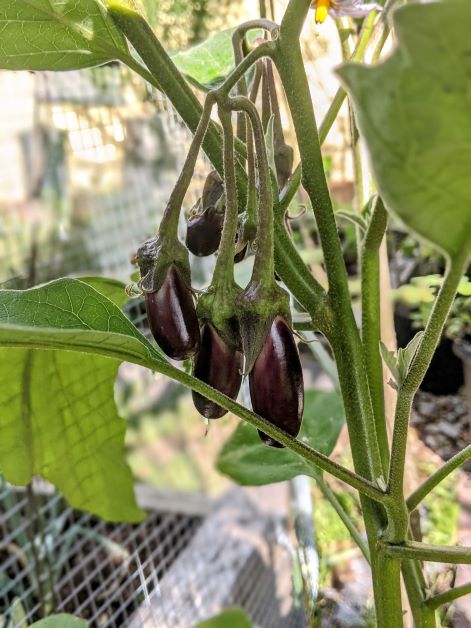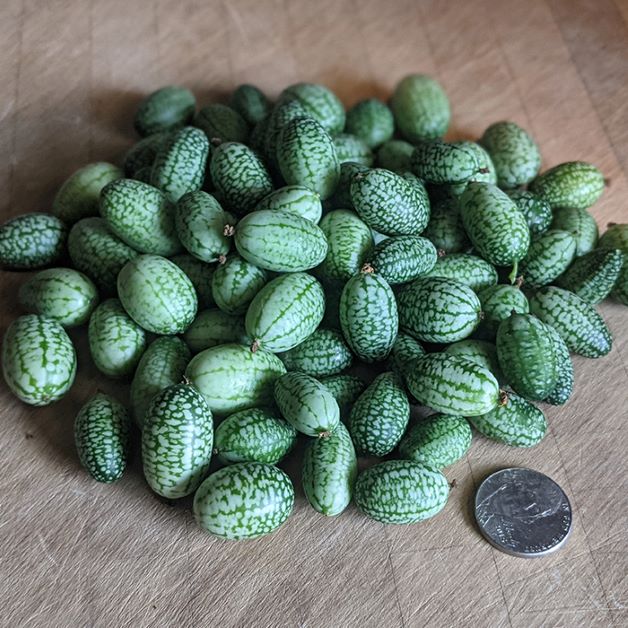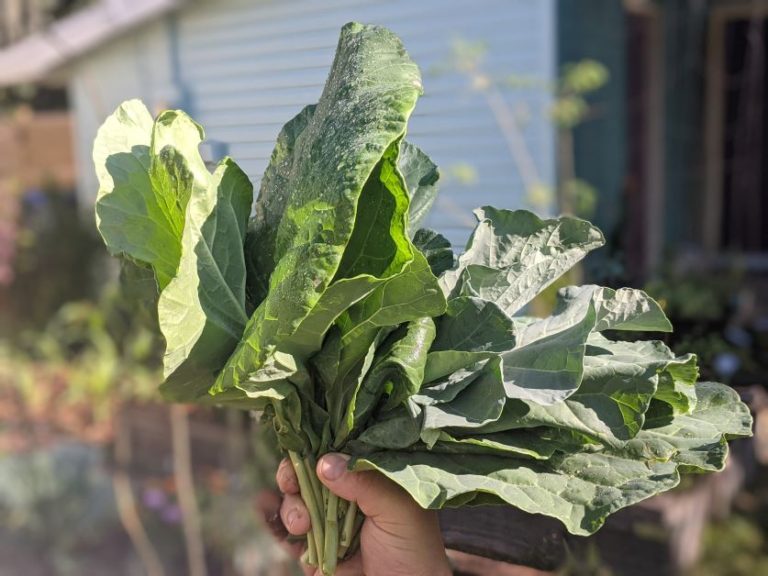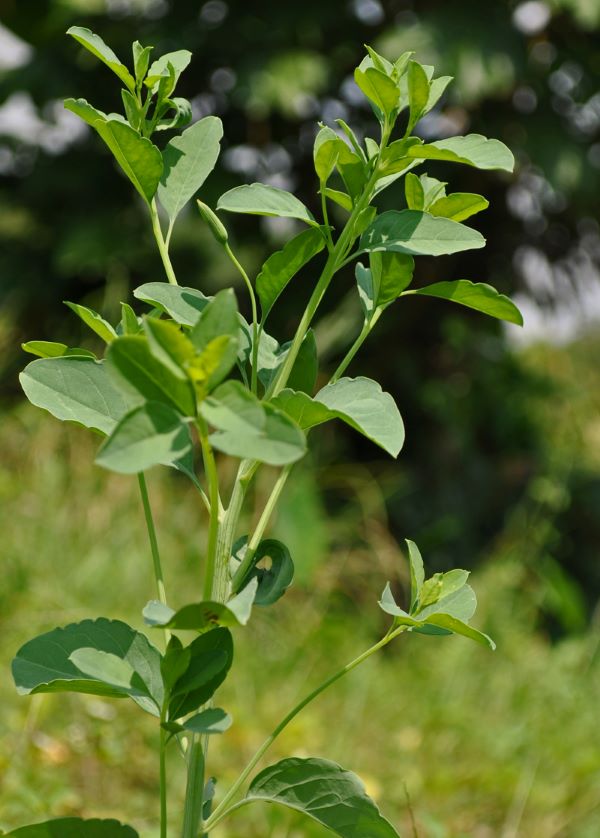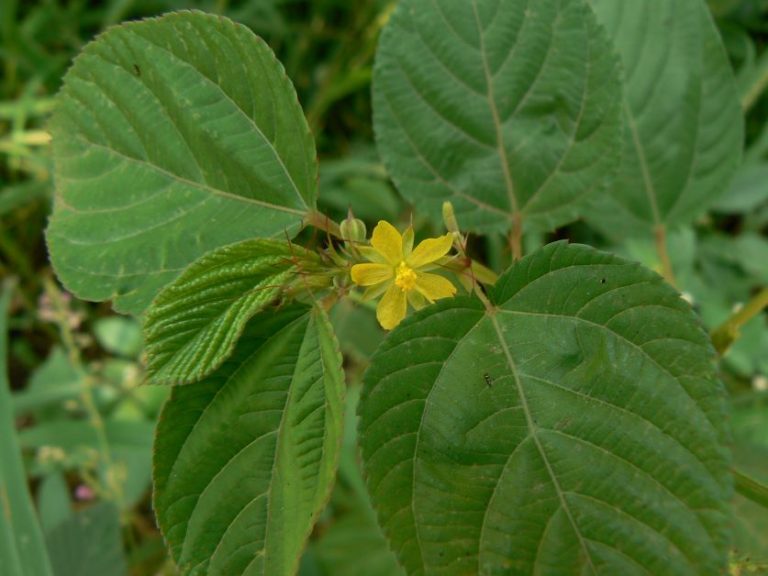Little Fingers in Florida – An Eggplant Growing Guide
Growing eggplant in Florida is easy — it’s a warm-weather vegetable, after all. Out of all the eggplants I’ve tried, the little fingers variety is my favorite because of its small size and tender flesh.
What is Eggplant?
Eggplant (also known as aubergine for those across the pond) is a member of the nightshade family. It’s related to tomatoes, peppers, and potatoes. Technically a berry, the entire eggplant fruit is edible. Raw eggplant isn’t poisonous, but it doesn’t taste very good, either.
Eggplants come in a wide variety of colors and shapes. The giant, dark purple eggplants you see at the grocery store are usually Black Beauties. Some other popular varieties are graffiti, Italian, Thai, Indian, white, and Japanese.
Today, we’ll keep our focus on the little fingers.
Little Fingers Eggplant Variety
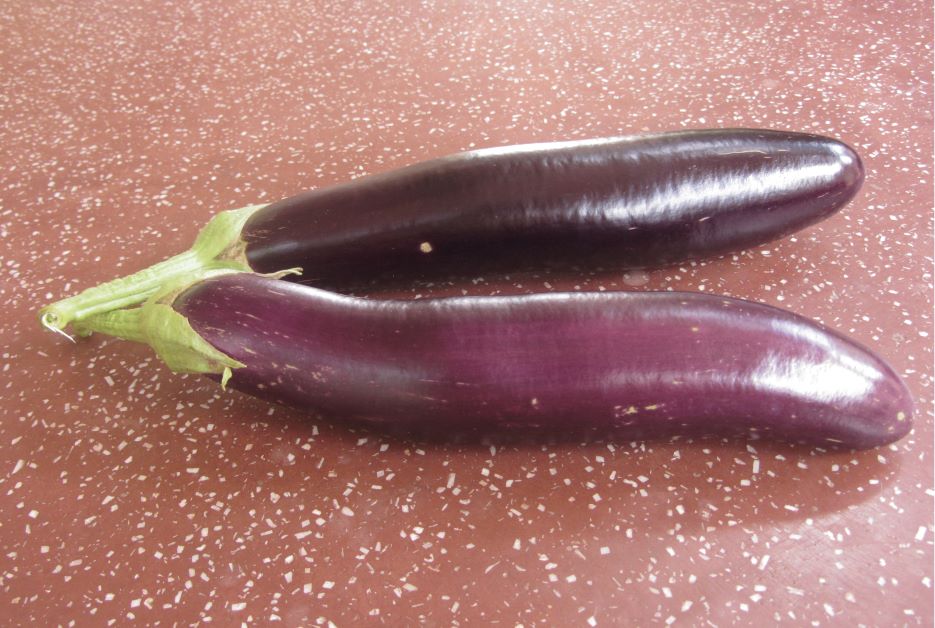
Little fingers are a small, skinny variety of eggplant. They’re shaped a little like mini summer squash. They have dark purple skin, like the black beauty. The little fingers’ small size and thin skin make it perfect for quick sautéing. They also don’t have as many seeds as other eggplant varieties.
Are Eggplants Perennial in Florida?
One of the coolest things about growing eggplant in Florida is that it can be a perennial. In colder parts of the world, eggplant is strictly a spring and summer crop.
Floridians in zone 9B and below can over-winter their eggplants and keep them growing year-round. You won’t get fruit during winter, but you’ll get a quicker harvest when eggplant season comes again in early summer and fall.
Most gardeners in Florida are no strangers to covering their plants at night when temperatures dip near freezing. Use a sheet, tarp, or frost blanket and cover your eggplants if the forecast shows a nightly temperature of 35F or lower and they should survive.
When to Plant Eggplant in Florida
When you plant eggplant in Florida depends on which part of the state you live in.
[table id=7 /]
How to Grow Eggplant from Seed
- Plant your eggplant seeds about ¼ inch deep in potting soil using starter trays
- Water your seeds. Keep the soil moist but not soggy
- Put your tray in a warm location (75-75F) with plenty of sun
- Transplant when your eggplant seedlings are about 4 inches tall and have at least 2 true leaves. Bury the transplant at least 2 inches deep
- Water directly after transplanting
Eggplant Care
Light and Temperature
Eggplants are a great vegetable to grow in Florida because they love warm weather and sunshine. Eggplants do best in temperatures between 70°F and 85°F. If it gets much hotter than 90°F, eggplant production is stunted. Eggplants are sensitive to cold and will experience flower drop at temperatures 50F and below.
Water
Eggplants don’t need as much water as their tomato cousins, but under-watering will cause your eggplants to be bitter. Your plant will need about an inch of water a week, more if it’s especially hot. In general, eggplants are fairly drought-tolerant.
Soil
As with most vegetables, eggplants do best in fertile, well-draining soil. They also prefer soil pH of 5.5 to 7.5.
Spacing
Eggplants are not a small species. They have broad leaves, lots of branches and can grow up to 6 feet tall. Give about 2 feet of space between each plant and keep your rows 3 or 4 feet apart.
You’ll need to stake up your eggplant as it grows taller, especially once it starts producing fruit. A bamboo pole and twine is a cheap option, although some people use tomato cages.
Does Eggplant Grow Well in Containers?
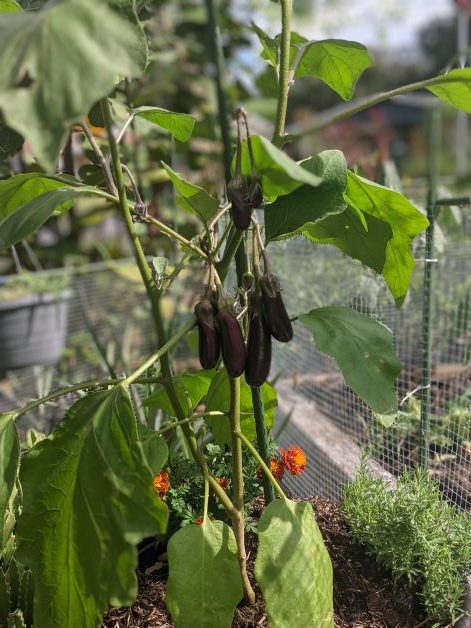
How to Fertilize Eggplants
You should fertilize your eggplants twice a year, once in spring and once in summer.
Organic blood meal is the best fertilizer for your eggplants in the spring. It’ll add extra nitrogen to the soil to give your growing plant a jumpstart. This is especially important if you’re growing in a raised bed – growing in the same soil season after season can cause a nitrogen deficiency.
You may want to dissolve your blood meal in water instead of applying it directly. Dissolving the blood meal will make it less likely that you’ll burn your plants as nitrogen can be harsh.
In the summertime, fertilize with organic bone meal. Bone meal gives your eggplants a kick of phosphorus, which helps to promote flowering. Bone meal won’t burn your plants, so you can apply it directly. It’s slow-acting so make sure to feed in early summer.
Eggplant Pruning
If you’re growing your eggplants as a perennial, there isn’t a need to prune them for the first few seasons. If they start to get unruly after a couple of years, prune the suckers off the main stem just like you would a tomato plant.
When to Harvest Eggplants
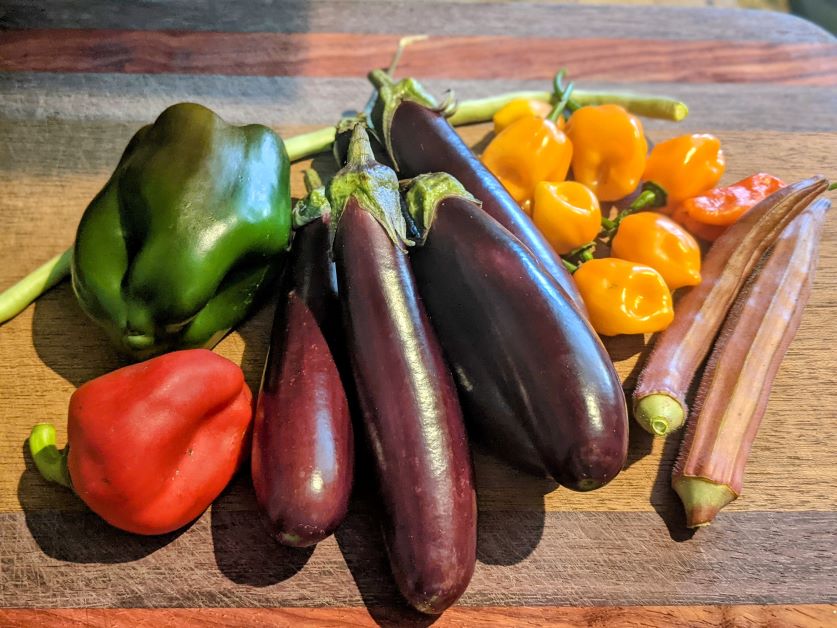
Eggplants don’t taste very good if you harvest them at the wrong time.
Leaving your eggplants on the vine for too long will make them bitter and pithy (spongy and dryish). They’ll also start to lose their vibrant color. It takes about 70 days for little fingers eggplant to go from seed to harvest.
The best way to know when to pick your little fingers eggplant is to harvest them when they get to be the right size. This variety is 3 to 6 inches long when mature, so they’re good to pick anytime between then. You can also give your eggplant a gentle squeeze – it should be between firm and soft.
Harvest your eggplants often to encourage more fruit to form. Use scissors to pick your eggplants instead of ripping them off with your hands. Unlike tomatoes, their stem is firmly attached to the plant. You’re almost guaranteed to cause some damage if your try to hand-pick your eggplants.
Like all nightshades, eggplant leaves are poisonous, so don’t eat them.
Troubleshooting
Pests
Two pests that I battle with when growing eggplants are aphids and ants. Remember – if you’ve got ants, you’ll probably get aphids, too.
Flea beetles can also be a problem with eggplants. You’ll know you’ve got flea beetles if you have tiny holes chewed into your leaves.
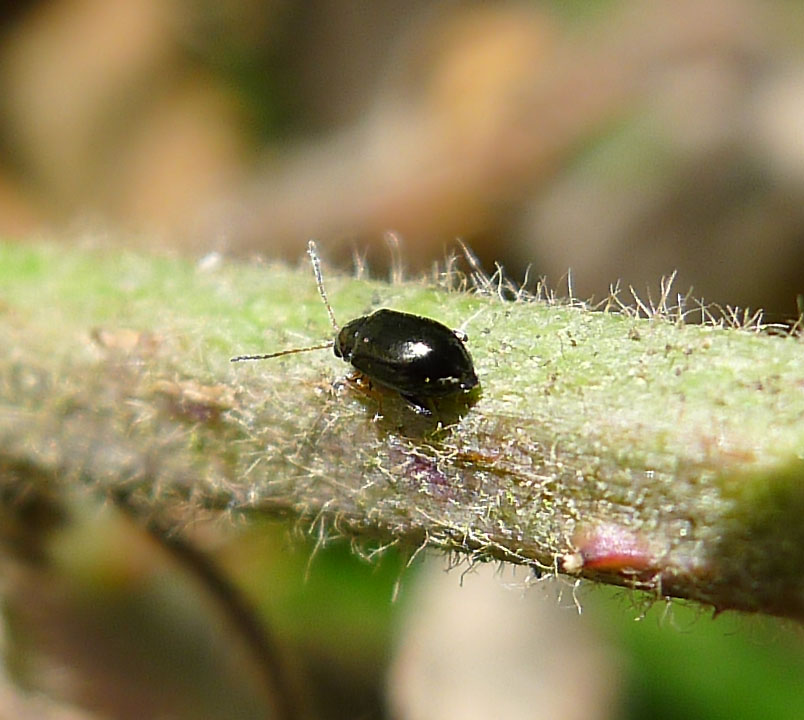
Flea beetles can come in different colors, but they’re most commonly found in black. They’re small and jump high, hence the name flea beetle.
Diatomaceous earth and Neem oil are good organic solutions to rid your garden of flea beetles.
Diseases
Eggplants have large, broad leaves that can be susceptible to powdery mildew.
Powdery mildew looks like a dusting of fine white powder on your plant’s leaves. You can try to treat powdery mildew, but most fungicides and at-home remedies work best as prevention. Once you notice it, it’s usually too late.
To treat powdery mildew, you can try organic copper fungicide or a DIY solution of 1 part mouthwash to 3 parts water.
Some tips to avoid powdery mildew:
- Use a water wand and water the base of your plant instead of from overhead
- Make sure your eggplant gets plenty of sunshine — this helps keep your leaves dry
- Practice proper plant spacing to encourage airflow between the leaves
Disclaimer: Offbeet-gardener is reader-supported. At no extra cost to you, I get commissions for purchases made through links in this post.

